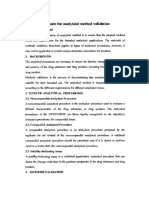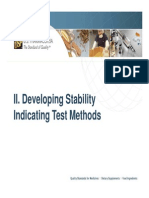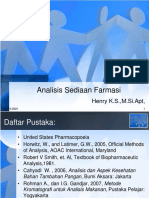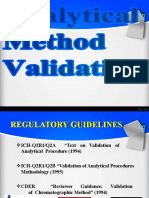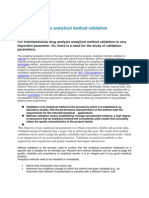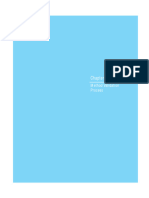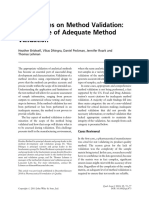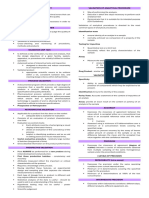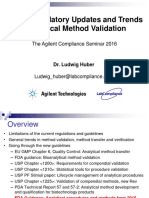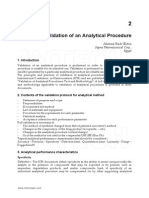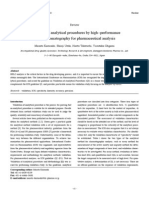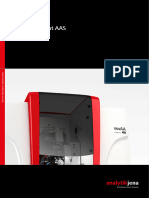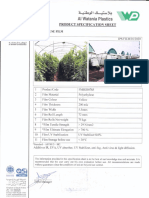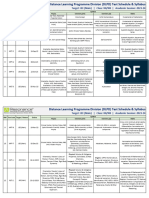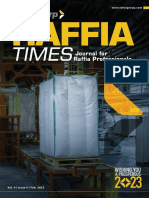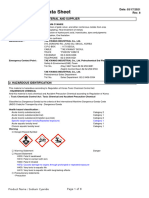0% found this document useful (0 votes)
41 views55 pagesAnalytical Method Validation
Analytical method validation is crucial for ensuring consistent, reliable, and accurate data in regulated environments, as incorrect measurements can lead to significant costs. The validation process involves defining the method's application, developing protocols, and assessing various characteristics such as accuracy, precision, specificity, and linearity. Compliance with regulations and guidelines from organizations like the FDA and ICH is essential for establishing the suitability of analytical procedures.
Uploaded by
aanchal.buCopyright
© © All Rights Reserved
We take content rights seriously. If you suspect this is your content, claim it here.
Available Formats
Download as PDF, TXT or read online on Scribd
0% found this document useful (0 votes)
41 views55 pagesAnalytical Method Validation
Analytical method validation is crucial for ensuring consistent, reliable, and accurate data in regulated environments, as incorrect measurements can lead to significant costs. The validation process involves defining the method's application, developing protocols, and assessing various characteristics such as accuracy, precision, specificity, and linearity. Compliance with regulations and guidelines from organizations like the FDA and ICH is essential for establishing the suitability of analytical procedures.
Uploaded by
aanchal.buCopyright
© © All Rights Reserved
We take content rights seriously. If you suspect this is your content, claim it here.
Available Formats
Download as PDF, TXT or read online on Scribd
/ 55




















